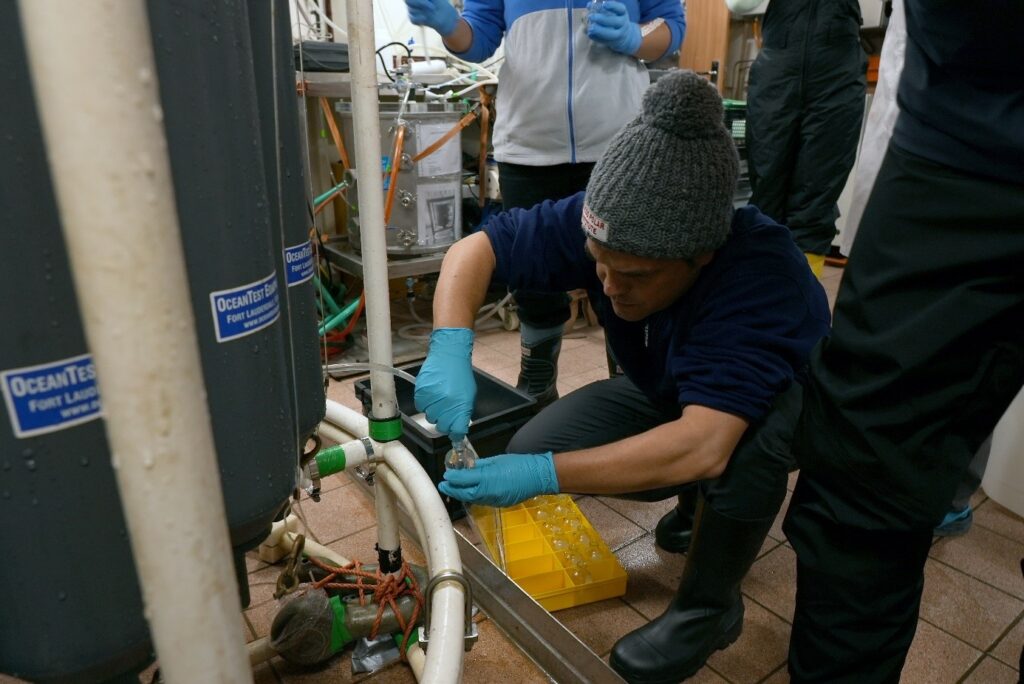77.39° North, 79.36° East – Cloudy, 0.4 °C, wind speed: 5 m/s
Untangling the chemistry of seawater
Every single drop of seawater contains all the chemical elements from the periodic table. Some of them exist in large concentrations and their distribution in the ocean is quite uniform. Others exist in much lower quantities and their presence or absence can provide information about the way the ocean behaves.
During the Arctic Century Expedition, the chemical oceanographers and geochemists have been collecting seawater samples to measure different chemical parameters. Some of these parameters, including oxygen, pH, total alkalinity and nutrient concentrations are analysed directly onboard, immediately after sample collection. These data will support the interpretation of the results obtained during the Arctic Century Expedition.
However, not all samples can be analysed on the ship. A team of two scientists is interested in measuring some metallic chemical elements such as neodymium. These elements are found in seawater at such low concentrations (less than 0.000000001 grams of these elements per kilo of seawater!), that it is almost impossible to perform their analysis in a boat built of metal. Instead, the scientists must take tonnes of seawater back home to their ultra-clean laboratory. Once there, the samples will undergo numerous chemical processes before being measured by the most sensitive mass-spectrometry techniques.
Despite all of the complications associated with the measurement of these elements, they will provide valuable information of different processes in the water column. Neodymium will inform us about the pathways of Atlantic waters through the Kara and Laptev Seas, and Sant Anna Trough, and thorium will provide insights about organic particle fluxes from the sunlit surface to the deep ocean. Furthermore, the measurement of these elements is part of the objectives of the international GEOTRACES programme. This programme aims to identify the processes and quantify the fluxes that control the distributions of certain chemical elements, to establish their relationship with marine organisms, as well as their response to changing environmental conditions.
None of this work would be possible without the hard work of the CTD-rosette team and the crew.

Header photograph: A team of scientists analysing water on board the Akademik Tryoshnikov, directly after being sampled by the rosette.
Rights: © 2021 Swiss Polar Institute, CC BY 4.0 